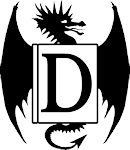Dinosaurs: Prehistoric Life from Dinosaurs to Humans
DK Smithsonian
DK
Nonfiction, YA? Dinosaurs and Prehistoric Animals/Science
Themes: Dinosaurs and Prehistoric Animals, Encyclopedias, Plants
***+
Description
By the start of the Mesozoic - the "Age of Dinosaurs" - life in some form or another had been
proliferating on Earth for several hundreds of millions of years, until a mass extinction event
(not the first, but one of the most iconic) that ended the Permian Period. From the devastation
would rise many grand, diverse plants and animals that would define an era... and the same would
happen at the end of the Cretaceous Period, when the Cenozoic began. Using numerous diagrams,
fossils, and reconstructions, this book charts life on Earth from the start of the Triassic to
the appearance of modern humans.
Material in this volume was previously in Dinosaurs and Prehistoric Life from DK
Publishing.
Review
I picked this up in the Barnes and Noble discount section because it included many non-dinosaur
life forms (plants, insects, and invertebrates, as well as covering Cenozoic times) that are often
glossed over in other books on prehistoric life I have... well, that, and I had a gift card that
made it free to me. Considering what I paid for it, and the new-to-me material it covered, I can't
say I'm entirely disappointed, but I can also say that I would've liked more.
After the overview at the start - giving a quick look at what evolution is, what fossils are, and
how we know what we know about biomes that died out long before our own ancestors began walking
upright, let alone writing science books - this book starts with the Triassic. I admit I'd hoped
for a little on the pre-dinosaur life forms, which I have found frustratingly little on in
armchair-accessible works, but at least this volume covers something more than the usual suspects,
offering fossils and a few reconstructions of plants, invertebrates, and several non-dinosaur (or
non-dinosaur-ancestral, as the "terrible lizards" themselves took some time to rise to dominance)
entries. Some were interesting, but most feel like quick post-it notes that only tantalize, that
don't always explore what's significant about this particular entry to justify inclusion over
others... and a few are just plain irritating, showing only fragments while others that claim in
the text to have excellent fossils aren't show well, or at all. More than once, I found places
where text contradicted itself, likely the result of incomplete editing as content was revised
over subsequent editions. And there are several scientific terms that the book throws around
without including a glossary. Those frustrations aside, books like this rest largely on visual
appeal, and Dinosaurs does deliver fairly well there. In addition to the bite-sized
entries, there are several insets comparing extinct life forms to modern counterparts. This may
not be the only book on dinosaurs and prehistoric life one will ever need (no such book exists
that I'm aware of), but it's not a bad entry point or addition to a layperson's library on the
matter.
